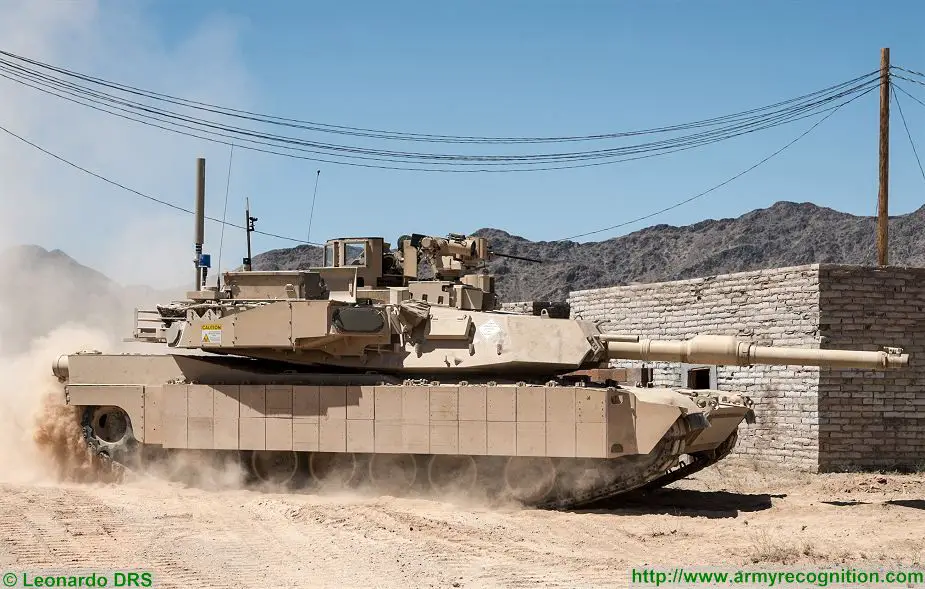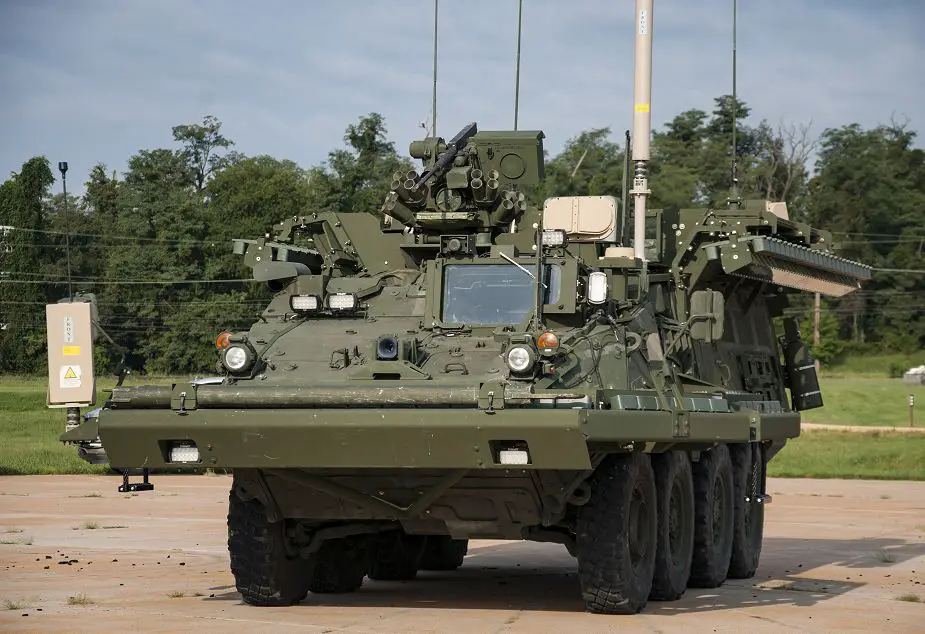US Army to improve combat vehicles with APS Active Protection System
US army is on the process to improve protection of combat vehicles and main battle tanks with the use of active protection systems for vehicle armor. The U.S. Army is pursing three variants of MAPS, he said: Trophy APS (Active Protection System), for use on the M1A2 Abrams SEPV V3, Iron Curtain APS on the Stryker wheeled armoured and Iron Fist APS on the Bradley tracked IFV (Infantry Fighting Vehicle).

U.S. M1A2 Abrams main battle tank fitted with the Israeli-made APS (Active Protection System) Trophy (Picture source Leonardo DRS United States )
"Today, we need to adapt differently to threats, not just by adding more armor," he said, noting that the Abrams tank today is so heavy, transporting it is a problem and many bridges are not strong enough to support its weight.With weapons becoming more potent, adding more armor just isn't feasible, he added. A new approach is needed.
Armor plating that protects Soldiers inside vehicles is known as "passive protection," because it doesn't do anything except deflect or absorb blasts and projectiles. Active protection systems, or APS, is what Vanyo and his team are advocating, developing and eventually hoping to field.Vanyo explained that active protection measures are a suite of responses that will increase survivability of the platforms -- and of those personnel inside.
The measures can be grouped into two categories, he explained: hard kill and soft kill. Soft kill measures include sensors that can detect signatures from weapons and then interfere with those weapons using electro-magnetic countermeasures. Hard kill refers to physical countermeasures such as blast or projectiles that destroy or divert incoming fire.
The near-term effort to develop hard kill and soft kill countermeasures is a program known as Modular Active Protection System, or MAPS, he said.Unfortunately, there's been a lot of misunderstanding about MAPS, Vanyo said, and a lot of that has to do with the name.
"MAPS is a framework for a modular, open-systems architecture. It is not an active protection system," he said, explaining that this framework consists of the controller software and hardware that will allow the active protection system to function once it is developed.

Iron Curtain on a Stryker 8x8 armoured vehicle (Source picture ARTIS)
It is hoped that Trophy APS will be fielded by 2020, he said. Regarding the other two variants, a decision will be made during the second quarter of fiscal year 2018. Maj. Gen. John Charlton, commander, Army Test and Evaluation Command, agreed that mixing an active with a passive protection system is the way to go.
Even with all of its armor, "it's amazing what an explosively-formed projectile can do to a 78-ton Abrams," he said, having witnessed the damage at his Alabama test center facility in Redstone Arsenal. Personnel at the arsenal are working on developing an APS and are testing various systems that can be fielded once MAPS has matured.
The concern right now, he said, is understanding the signal that APS produces and if that signal might interfere with other vehicle software, or provide its own signature that could be picked up by enemy sensors. Getting APS right will involve pooling engineers from across the Army and other service laboratories, along with help from industry, he said, adding that he hopes to see Soldier testing in as little as two years.


























